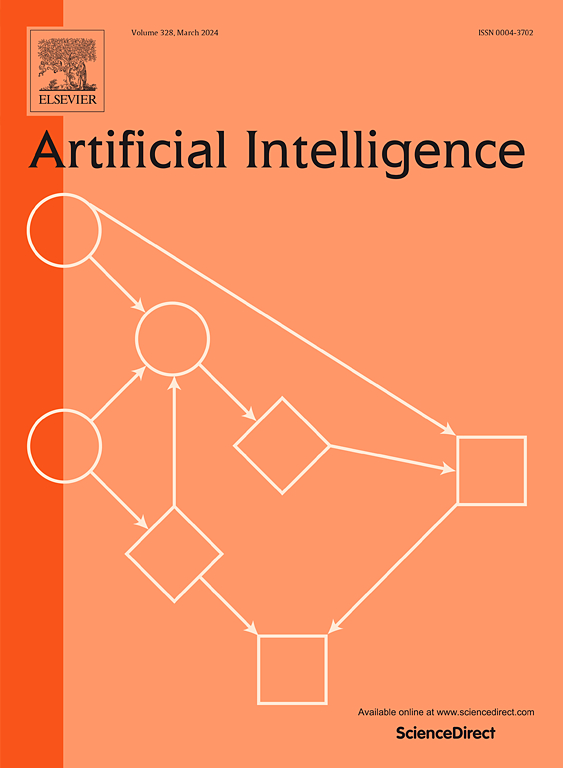非平衡图的一步主动学习方法
IF 4.6
2区 计算机科学
Q1 COMPUTER SCIENCE, ARTIFICIAL INTELLIGENCE
引用次数: 0
摘要
图主动学习(GAL)是图神经网络(gnn)的一个重要研究方向,旨在选择最有价值的节点进行标记来训练gnn。以前在GAL中的工作主要集中在gnn的整体性能上,忽略了不同类别之间的平衡。然而,现实应用中的图通常是不平衡的,这导致GAL方法选择类不平衡的训练集,从而导致有偏差的GNN模型。此外,由于多回合查询的高成本,对一次性查询整个训练集的一步GAL方法的需求越来越大。这些现实促使我们研究不平衡图上的一步主动学习问题。在本文中,我们提出了一种理论驱动的方法,称为对比契约(contr2)来解决上述问题。contr2的关键思想是多数类内的边在边集中占主导地位,因此收缩这些边将减少不平衡比。具体来说,contr2首先通过图对比学习(GCL)学习节点表示,然后随机收缩连接具有相似嵌入的节点的边。我们从理论上证明了contr2可以大概率地降低不平衡率。通过利用更均匀分布的图,我们可以在不需要任何种子标签的情况下实现标记节点的平衡选择。在11个不同预算的数据集上对contr2的有效性进行了评估。contr2表现出了出色的性能,在一些数据集上,仅用一半的注释预算就实现了更高或同等的性能。本文章由计算机程序翻译,如有差异,请以英文原文为准。
Contra2: A one-step active learning method for imbalanced graphs
Graph active learning (GAL) is an important research direction in graph neural networks (GNNs) that aims to select the most valuable nodes for labeling to train GNNs. Previous works in GAL have primarily focused on the overall performance of GNNs, overlooking the balance among different classes. However, graphs in real-world applications are often imbalanced, which leads GAL methods to select class-imbalanced training sets, resulting in biased GNN models. Furthermore, due to the high cost of multi-turn queries, there is an increasing demand for one-step GAL methods, where the entire training set is queried at once. These realities prompt us to investigate the problem of one-step active learning on imbalanced graphs.
In this paper, we propose a theory-driven method called Contrast & Contract (Contra2) to tackle the above issues. The key idea of Contra2 is that intra-class edges within the majority are dominant in the edge set, so contracting these edges will reduce the imbalance ratio. Specifically, Contra2 first learns node representations by graph contrastive learning (GCL), then stochastically contracts the edges that connect nodes with similar embeddings. We theoretically show that Contra2 reduces the imbalance ratio with high probability. By leveraging a more evenly distributed graph, we can achieve a balanced selection of labeled nodes without requiring any seed labels. The effectiveness of Contra2 is evaluated against various baselines on 11 datasets with different budgets. Contra2 demonstrates remarkable performance, achieving either higher or on-par performance with only half of the annotation budget on some datasets.
求助全文
通过发布文献求助,成功后即可免费获取论文全文。
去求助
来源期刊

Artificial Intelligence
工程技术-计算机:人工智能
CiteScore
11.20
自引率
1.40%
发文量
118
审稿时长
8 months
期刊介绍:
The Journal of Artificial Intelligence (AIJ) welcomes papers covering a broad spectrum of AI topics, including cognition, automated reasoning, computer vision, machine learning, and more. Papers should demonstrate advancements in AI and propose innovative approaches to AI problems. Additionally, the journal accepts papers describing AI applications, focusing on how new methods enhance performance rather than reiterating conventional approaches. In addition to regular papers, AIJ also accepts Research Notes, Research Field Reviews, Position Papers, Book Reviews, and summary papers on AI challenges and competitions.
 求助内容:
求助内容: 应助结果提醒方式:
应助结果提醒方式:


